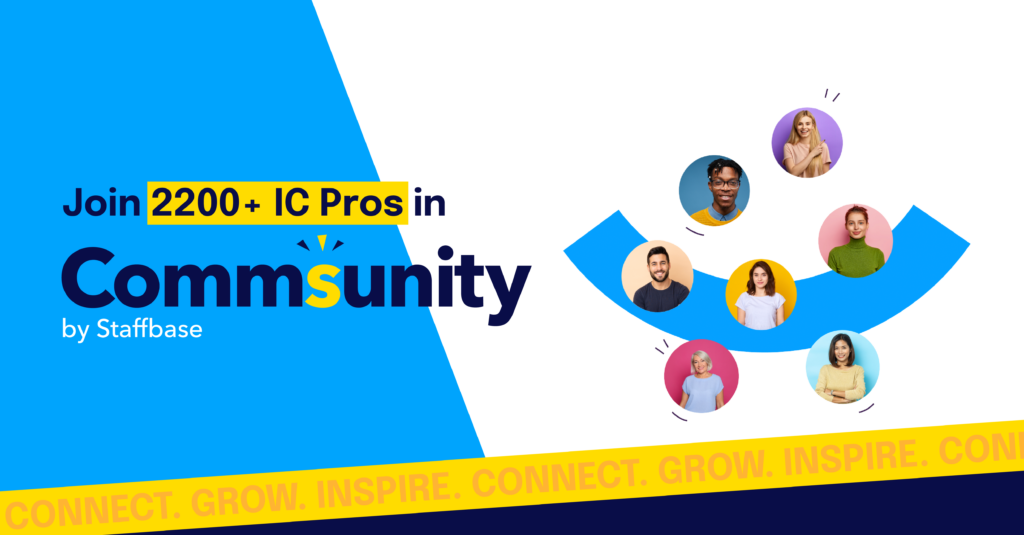What is Resilience? And Can It Actually Help Your Mental Health?

In recent years, communications professionals around the world are struggling with their mental health. A study by the Centre for Strategic Communication Excellence reveals that:
Over a third of communicators have experienced a decline in mental health since March 2020
48% of communicators have considered leaving the profession to protect their mental well-being, and
2/3 of comms professionals have taken leave since the beginning of the pandemic specifically to support mental wellbeing.
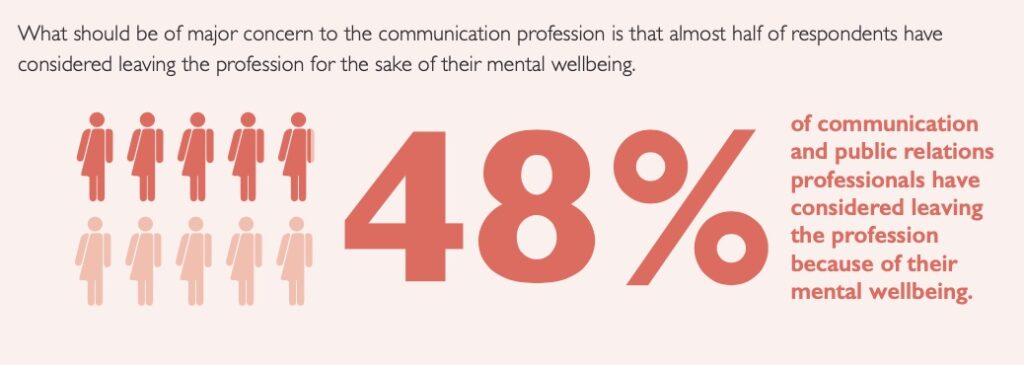 Source: So How Do You Really Feel? by the Centre for Strategic Communication Excellence
Source: So How Do You Really Feel? by the Centre for Strategic Communication Excellence
The stats are clear: communicators are burning out.
And internal communicators, in particular, are facing unique pressure points on the frontlines of workplace transformation and crisis management.
As an IC pro, you’re the link between management and employees — and often its buffer. You have to understand management’s messages, then communicate those messages effectively and in an engaging way. At the same time, however, you must also be aware of the mood of the workforce and be able to perceive employees’ needs.
You’re stuck in the middle, balancing different stakeholder expectations. Unfortunately, that also means you’re constantly under pressure.
So what’s the solution?
One remedy for stress that’s becoming more and more common in the workplace is the concept of resilience.
Unfortunately, resilience is often presented as a skill or a characteristic that we can learn. It’s become a buzzword in the corporate world; another modern management tool. A miracle pill against stress, so to speak. One that allows us to again work in a more focused and efficient way.
But resilience is not that simple.
What is resilience?
Resilience describes the psychological process of dealing with and adapting to difficult or challenging situations. This process involves maintaining and promoting health when encountering periods of stress — and that includes mental health.
Psychologist Jack Block first used the term in the 1950s when he studied the personality development of children in risky situations. He described resilient children as being more empathic, more able to cope with stress, more intelligent, and more emotionally adapted to their situation. In addition, he found that resilient children were more self-accepting, curious, creative, and less anxious.
Resilience, however, is not instinctive. We tend to not deal with problems until they’ve already surfaced, and are often more concerned with fighting symptoms rather than preventing them.
That’s why it’s important to know what causes stress — to understand how to be proactive about our mental health instead of being reactive.
To become resilient, we must first understand what triggers stress
Every person reacts differently to stress triggers (stressors), as well as internal and external stimuli. A distinction is made between the following stress triggers:
Internal stressors are rooted in upbringing and promote the perception of situations or people as stressful (i.e. too high demands or expectations, unfulfilled aspirations, low resilience).
External stressors are everyday situations that we perceive as unpleasant or threatening (i.e. noise, climate, waiting times, worries, illnesses, pain, boredom, criticism).
Psychological-mental stressors are those that we perceive as a psychological burden (i.e. excessive or insufficient demands, pressure to perform, time pressure, competitive pressure).
Social stressors arise in our relationship with our environment (i.e. isolated working, negative workplace atmosphere, bullying or mobbing in the workplace).
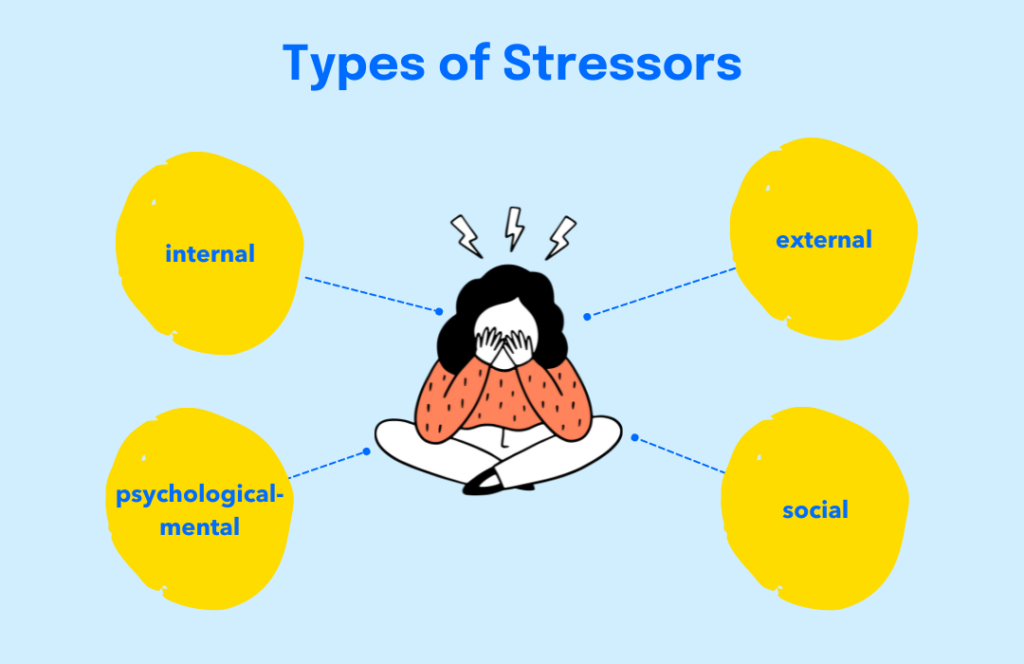
When such stressors affect us in unfamiliar situations or during times of change, distress, and crisis, we switch to a learned thought pattern and behaviors that we believe to be appropriate — a kind of autopilot. But most of the time this behavior doesn’t solve the crisis, because we react instead of acting with foresight. We panic as if we’re losing control.
It’s important to keep in mind that as each person perceives stressors and crises differently and deals with them differently, they also need different resources to cope.
Some people may need more time to process stressful experiences both physically and mentally, while others recover quickly despite high levels of stress.
Resilience is a process
Here’s the thing: there is no one right response to stress.
The key is to cultivate resilience, knowing how you react in certain situations.
But resilience isn’t a skill learned — it’s a dynamic process of consciously perceiving and reflecting on the stress-causing internal and external stimuli that put us under pressure and push us to act. Resilience is about becoming aware of and dealing with your emotions, thinking, and behavior, both in times of crisis as well as in stress-free times.
Resilient individuals develop a realistic picture of their abilities. They are aware of their strengths and weaknesses as well as their behavior, emotions, skills, experiences, and competencies in both stress-free and stressful moments. This awareness then helps someone overcome obstacles and persevere through difficult times.
Resilience also describes a resource-oriented attitude — knowing when to draw on individual skills and life experience (internal resources) and when to seek support from social circles (external resources). We are not always able to overcome our challenges alone. By knowing our abilities, we also know which weaknesses and deficits we have and can learn to assess whether — and when — we need help from others in order to maintain our health or survive distress.
Resilience is also the result of a learning process. We learn to reflect, assess our abilities, and know which resources are available to us to stay healthy and survive times of stress. When we reflect on a crisis that we have survived, we learn what led to that crisis, how we perceived and processed various stimuli, and also see what we needed to cope with it.
And it’s not something that can happen overnight. It takes time — learning to be resilient is a lifelong process.
Maintaining mental health with resilience factors
So what are the benefits of being resilient?
Those who can cope with the demands and challenges of daily life to make informed decisions and solve problems are better able to cope with stress and strain.
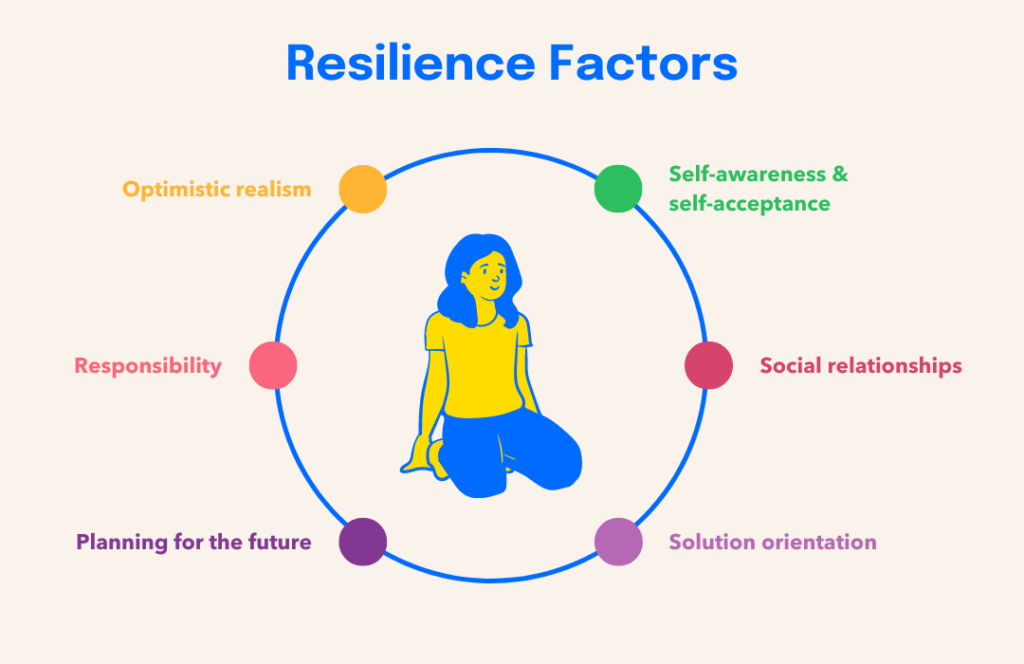
The following key resilience factors (also connected to the Cambridge Life Competencies Framework) are consistently found in scientific research and, in my opinion, contribute to maintaining mental health as well as better coping with stressful events.
6 Key Resilience Factors:
Self-awareness and self-acceptance: Being aware of your own emotions, abilities, and behaviors, but also of your own needs, desires, and weaknesses is important to situate ourselves in relation to our environment and to assess the impact of stimuli and stressors better.
Social relationships: Keeping in touch with empathetic people can help us realize that we are not alone in stressful situations. Focus on finding trustworthy and compassionate people who validate your feelings, which will enhance resilience skills.
Solution orientation: To solve problems effectively, focus on opportunities and alternatives. This requires an openness to new ideas and perspectives. It may also mean implementing partial or temporary solutions. In solution orientation, it is important that you have a clear goal in mind.
Planning for the future: In order to make plans and work on achieving goals, it is important to be aware of your abilities, skills, and resources (i.e. your personal network) in order to be able to realistically plan your goals and actively shape your own future.
Responsibility: Taking responsibility means that you make decisions as independently as possible from outside influences. This includes identifying and taking advantage of opportunities to exert influence. It also includes that you are aware of your tasks and the expectations of those around you, and actively communicating your own resources and capacities.
Optimistic realism: A positive attitude strengthens our ability to act and our self-confidence. Optimism is particularly related to your self-efficacy expectation: the realistic assessment of your abilities as well as their effective application.
Resilience is no guarantee against illness, dissatisfaction, and stress
Due to the increasingly popular scientific discussion of resilience, the meaning of this concept is unfortunately also misinterpreted and meanwhile overused. A real hype has resulted – with guidebooks, seminars, and trainings by numerous self-proclaimed experts.
Please be careful, though! For just as much as it is now being claimed that resilience is a skill, it is also easy to get the impression that resilience is the cure for all mental stress. Resilience as a process and also as an attitude can help to prevent stressful situations or to get through them. But it does not help with mental conditions and is by no means a replacement for therapy.
For as much as resilience helps us to find ways out of a crisis, it is also important to analyze the causes of stressful situations as well to identify the cultural and structural problems within the organization. This crucial step is hardly mentioned in all these hyped guidebooks, giving the impression that it’s solely up to us to adapt to stressful circumstances.
Let’s get real about resilience
It is equally the responsibility of organizations to put more focus on internal working conditions and actively improve or prevent crises.
The study by the Centre for Strategic Communication Excellence shows that 73% of communications professionals believe their organization should do more to promote mental well-being and mental health maintenance in the workplace.
And it’s about time that when we talk about mental health as part of internal communication, we also focus on the working conditions and mental well-being of internal communicators and support them in their mental health maintenance.
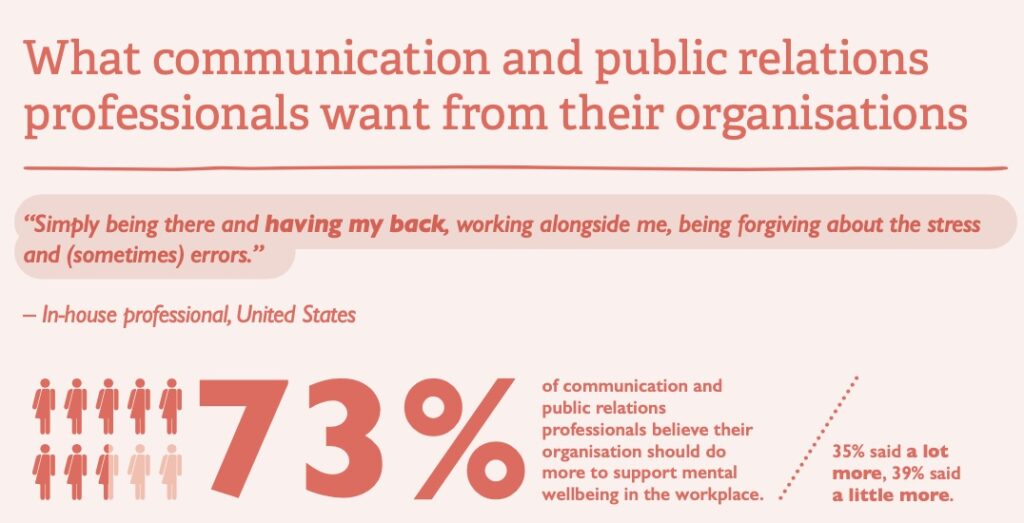 Source: So How Do You Really Feel? by the Centre for Strategic Communication Excellence
Source: So How Do You Really Feel? by the Centre for Strategic Communication Excellence
Learning about resilience helped me listen to myself and observe my behavior — especially in interaction with my surroundings. By now I can already tell when I start feeling emotionally overwhelmed and (mentally) exhausted.
Be on the lookout for these signs of stress:
no motivation to do anything
easily irritable
I feel empty or burned out
I withdraw from social situations
trouble falling asleep or staying asleep through the night
no patience; I am often nervous
anxiety or panic attacks
All of these are typical avoidance tactics. I avoided accountability, confrontation, and any potential arguments and conflicts. I blamed others for my mistakes and felt sorry for myself.
So resilience as an attitude helps me to become aware of my thoughts, my emotions, and also my actions. And to take responsibility for them. It also helps me to understand that I don’t have to go through challenges alone. It’s okay to ask for help and to signal when things are getting too much for me.
But I also have learned that resilience has its limits. When I understood that I could no longer help myself and my environment couldn’t, I needed the help of a therapist. For me, resilience is a helpful addition to therapy, especially between sessions, to process insights and start making future plans again once you feel better.
Resilience resources
If you want to dive deeper into resilience, here are some books I highly recommend:
Viktor E. Frankl (1946): Yes to Life: In Spite of Everything
Bruce D. Perry, Oprah Winfrey (2021): What Happened To You?: Conversations on Trauma, Resilience, and Healing
Alice Updike Scannell (2020): Building Resilience: When There’s No Going Back to the Way Things Were
Tarana Burke, Brené Brown (2021): You Are Your Best Thing: Vulnerability, Shame Resilience, and the Black Experience
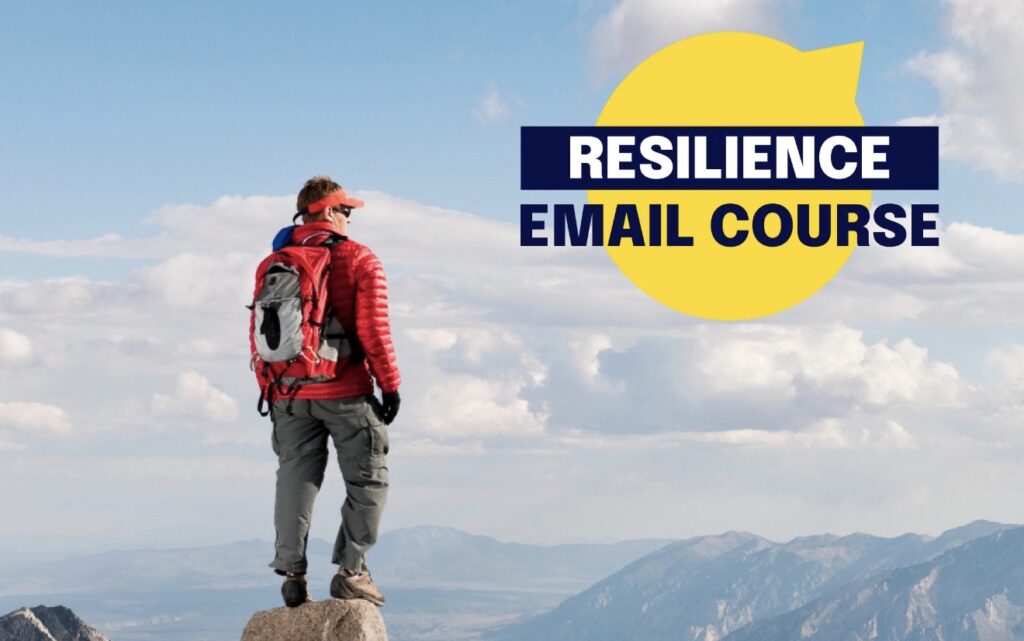
Want more practical tips on resilience?
Sign up for our email course, Let’s Get Real About Resilience.
Four emails. Four weeks. Practical tips you can apply to your life. Each week, you’ll learn how to:
better understand your emotions and reactions to stress
recognize the sources of stress in your life
protect your mental health at work
practice resilience
Mental health awareness in internal comms is on the rise. That’s why we’ve also put together blog articles, LinkedIn Live events, and a mental health channel in Comms-unity (our Slack group for IC pros from around the world) just for you.
And speaking of honest conversations . . . Let’s continue the discussion in Comms-unity. Have you tried to practice resilience? Which resources do you recommend? What challenges are you currently facing?
Wherever you are in your process, our #mental-health channel is a safe space for discussion — we’re here for support.







